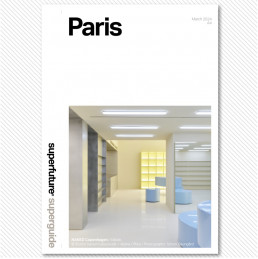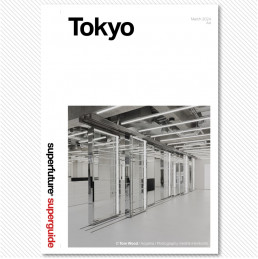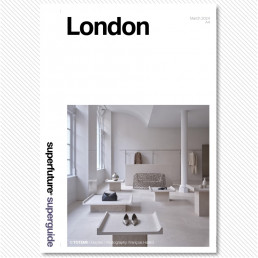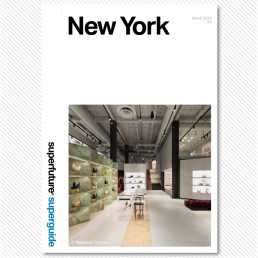
Born in Tajikistan to Ukrainian parents, interior designer and render artist Galina Arabskaya experienced political turmoil at a very young age. Her father was stationed in the Central Asian country because of his work in the former Soviet army, but the family had to flee the country when a civil war broke out in 1992, settling once again in Ukraine. Here, Arabskaya attended Zhytomyr Technological Professional College where she specialised in furniture production and showroom decoration, before collaborating with various interior designers. In 2016, the Ukrainian creative established herself as an independent interior designer, working with a small team of professionals of her own. Passionate about her work in the field of design, Arabskaya also enjoys to experiment in furniture production, an ability fuelled by husband and fellow furniture designer and producer. Additionally, she loves to travel around Ukraine and Europe to visit design exhibitions, design museums and to get better acquainted with commercial design and business operations abroad. Arabskaya’s career was abruptly interrupted due to the Russian invasion of her home country on February 24, forcing her once again to relocate. Superfuture sits down with the interior designer to talk about this dramatic change in her personal and professional life, and what the future holds.
What was the impact of Russia’s invasion of Ukraine have on your personal and professional life? Could you talk us through the vital decisions that you had to make? Several weeks before Russia’s invasion of Ukraine the information space was full of discussions about invasion. I remember how my colleagues from across Europe asking me from time to time about the situation and if an invasion was imminent. We couldn’t believe it because such an occupation would be a repeat of sorts of World War II. Also, Russia as a country is so many times bigger, and then there are so many friends and relatives both in Ukraine and in Russia who are united by the same past. I told all my colleagues that nobody here believed invasion would happen and we just kept on going with our careers. On February 24, Russia‘s absolutely barbaric invasion changed every Ukrainian’s life. No plans, no clear future, all current projects stopped, and what emerged was a new dangerous existence, being constantly in between shelling alarms, hiding in shelters and with curfews. I had three interior projects going on in Kyiv, Zhytomyr and Korosten when the invasion took place, and a fourth one was finalised but by way of a photo session. Existing plans for future projects were halted and don’t seem to be ever realised because of this new reality.
I had a small team that would assist me at various stages of my projects. So basically, my professional career, and those of many others in Ukraine were destroyed in one day. But I am happy to be a member of the international team of architecture and interior visualisation Highrenders, that gives me opportunity to work all over the world. I am truly grateful to the company owners who take care of me and support, helping me not to lose my job in this horrible time. The most difficult decision that I had to make was to leave Ukraine with my mother, sister and her two children for an indefinite period of time, and leaving my partner who had to stay behind to defend our country. All projects stopped, the office was closed, we literally had one hour and a half to pack things. Also, we didn’t know what come next. The support from European was fantastic. Starting with Poland, we were under incredible care and provided with everything we needed. All the people we met in Germany, Belgium, France, Spain learned from us first hand about the war, but also, they were concerned about our future and supported us generously. It’s impossible to forget the support we got from governments and ordinary people alike. My family is so grateful! We instantly understood that Ukraine is not alone.

What were the dynamics of both the Ukrainian market and creative scene prior to February 24? Are there differences or similarities with the rest of Europe? Also, how easy or hard was it to set up your own practice when you first started? The past decade, the Ukrainian design scene has really flourished, showing the most incredible growth. For us as creatives, it means a psychological breakthrough in terms of aesthetics when we see people letting go of that 1990s heritage and mentality to allow interiors, public places, and cities to transform. Features of interior and architecture projects in Kyiv, Dnipro, Odessa and Kharkiv in leading magazines and newspapers are no longer a novelty and happen quite regularly. My own interior practice started gradually. After studying design I worked for a furniture company for some time and that was a great first step in the realisation of my own interior design practice. I learned various computer programmes to create photorealistic visualisation of interiors in order to be able to communicate with clients and show the real vision of interior to up-to-date standards. It was the time when there weren’t so many lessons online, no 3D graphic training courses and I spent countless nights to create the image I wanted. When I got my first private orders there I had an inner conflict caused by the difference between my own modern vision and the client’s vision of design.
Mind you, a local client wanted to view multi-level ceilings like the ones in his neighbour’s house. It’s probably difficult to understand if you’ve never seen the interior aesthetics of the post-Soviet period. But you know, that was a norm and it was e-v-e-r-y-w-h-e-r-e. And also, clients had no opportunity to put things in perspective. You should know that materials and all other things from the post-Soviet era dominated everything and modern interior materials weren’t available to a wide range of consumers at the time. So, modern design as we know it today showed a real and absolutely different approach to beauty and comfort. And exactly this makes the difference between all that’s familiar and the new design I had proposed to the client at the first stage of designing. A lot of efforts were spent to achieve a compromise, but gradually the situation improved. New clients knocked on my door who had travelled abroad, becoming acquainted with modern comfort and new technology. In the past few years I was able to work on private residential interior projects where modern style dominated.
I’m so thrilled by the fact that the situation has completely changed. Designing stores and boutiques was also a great fun. This kind of interior design has different objectives, and as such, it’s different from home interior design, but it’s an exciting challenge. For a recent project, things needed to be arranged super fast and with the materials available on the market at that very moment as I didn’t have time for production and transport from other countries. What’s also convenient these days is the technology to create 3D visualisation and experiment with space, it’s quite inspiring too, playing with all these images and ideas. Retail design is very much about catching the attention of people by evoking a sense of comfort and coziness. I realised a number of small fashion store designs. My interior design project for South Korean cosmetics brand tamburins was a fantastic experience. The incredible visual branding inspired me immensely, and effortlessly triggered new ideas.

The Russian invasion obviously had a detrimental effect on Ukraine’s economy, but what has the effect been on the country’s creative community? Obviously, many creative processes stopped in Ukraine on the day of the Russian invasion. When your home, all of your relatives and close friends are in danger, your thoughts and those around you are focused only on surviving. I mean, all of your creative processes don’t make sense anymore. Three months after the invasion while staying in Barcelona, I visited Barcelona Design Week‘s show and I came across a Ukrainian stand curated by Larisa Tsybina. The stand presented object designs that Ukrainian designers had worked on before the invasion, but also works created during the war, such as screens that protect windows from bombs, instructions on how to make pallet coaches for prolonged stays in a bomb shelter. It proved that Ukrainian design is very much alive and highly flexible. At the moment I’m cooperating remotely with a Ukrainian furniture producer which started producing a series of furniture pieces before the war, but which now continues creating prototypes to perfect shapes. My task is to create visuals of objects and show them within an interior. For producers with a big creative component operating in Ukraine, current times are really challenging. Military duties on the front line, daily rocket attacks in different Ukrainian cities and towns, many casualties, rising prices, it’s a crazy daily reality which is incredibly tough.
The city of Kyiv seemed to be a buzzing centre of creativity on many levels. What can you tell us of this reputation and what it represented for a young generation of Ukrainians? Yes, that’s true. Kyiv is very progressive and has always been a buzzing centre of important cultural events. There are a lot of hubs, modern cultural centres and inspiring places, stylish restaurants and cafes, numerous events, parties, fests, festivals and concerts. There are many ways for young people to feel free and represent themselves, taking into account that Ukrainians travel a lot and bring home the best and most interesting experiences from anywhere in the world.
You’re now based in Barcelona. Why did you decide to settle there and tell us what is it like to work in a new country? Also, from a professional point of view, how does Barcelona compare to Kyiv? Actually, I didn’t have enough time to plan a trip to any country in Europe. Because of Russia’s sudden invasion, it was impossible to prepare anything. On the way to Spain, the countries we visited and had planned to stay, such as Poland, Germany and Belgium, were full of Ukrainian refugees and it was absolutely impossible to rent a flat. We learned weren’t so many Ukrainian refugees in Spain and decided to go to Barcelona. Besides, I had visited the city last year and was very inspired. It took a couple of months to fill out all necessary documents and register for prolonged stay in the country. Although I’ve now got a work permit, I haven’t got any work experience here. The work schedule in Spain is weekdays from 9am to 6pm, and then you’re off in the weekend, but in Ukraine we have a slightly different schedule. Very often we simply don’t have enough time because of the client’s assignment, so we start out enthusiastically and work super fast, handling lots of amendments and improvements along the way. At home, we tend to work long hours, and I think it’s because ten to fifteen years ago, we didn’t have the opportunity to be creative, so there’s a tremendous drive. On the whole, Barcelona is a city of constant inspiration with its beautiful architecture and so on, but compared to Kyiv, I think it has less of a metropolitan feel.
Your latest project for South Korean cosmetics brand tamburins was executed in Spain. Please tell us more about how you got involved in this project and what were the client’s requirements and wishes? The project for tamburins was initiated by a Kyiv-based entrepreneur before the war started. We agreed on the concept, but it was based on a location in Ukraine. So, the project was cancelled because of the invasion, but when I left for Spain and decided to stay, the idea popped up to adapt the concept to a local venue here. I should mention that I was very impressed by tamburins‘ branding and design creation visuals. It has a sensitive vision with an attentive approach to all details, characterised by strong packing and graphic design. For example, its Nude Hand Cream comes in a metal tube with a golden chain and looks like a fashion accessory and a piece of art at the same time. A pack of perfume for hands called The Shell also has this non-typical appearance for a hand care product.
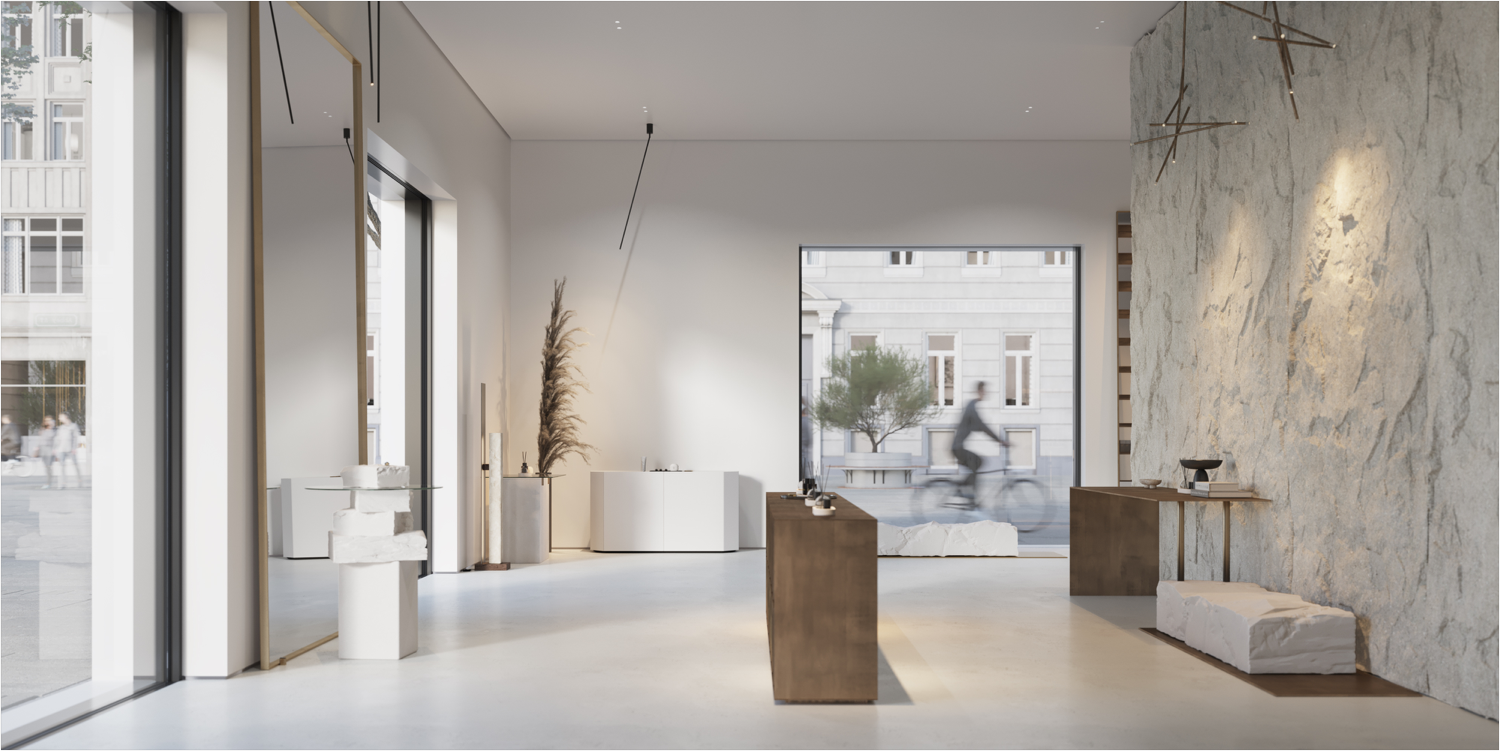
The informal content of the brand spawned the idea to present every product of the interior as an independent art work by way of an installation, as a rare exhibit on a pedestal. So, this resulted in stylish stands made in different styles with light directed towards them. Colours, textures and choice of materials, I’ve thought everything through. Last year, I was in Barcelona and took it all in as a tourist: Gaudí, a variety of sand shades, Frank Gehry‘s floating Golden Fish sculpture made of gold metal shimmering in the sun, everything is slow-paced and relaxed. It all encouraged me so much, I’ll never forget. Several months later in Ukraine, when I started to work on the project, I remembered the sunny lightness of Barcelona and it inspired me to implement that memory into a new concept. Light tones, contrasting inserts from glossy brass, a large number of mirrors – all this should have created a relaxing calm background, and a stone wall, the feeling of nature, and in my opinion it also should have served as a broken patterns metaphor in the sphere of beauty. The product’s independence, its purity and peace are the emotions I would like future consumers to feel.
Please tell us what your professional perspective is at this moment? What are the hurdles and/or advantages as a newly settled professional? Do you pitch for local projects in Spain? Also, do you see yourself settle permanently in Spain or do you wish to return to Kyiv when possible? It’s difficult to talk now about the professional perspectives in Ukraine as the country is at war. Russian shelling happens almost daily in a large number of Ukrainian cities, targeting mostly people and not military objects. Most Ukrainians try to be optimistic, keep calm and do their job if they have one. Many combine their job with daily volunteering and try to donate money to the army or affected areas of the country. Our architecture and design community are very active in building houses for internally displaced refugees. Generally, design is a domain that’s on the one hand spontaneous because the world is so wide and active, and a creative vision is always needed as we’re closely connected through internet, allowing us to work more freely and efficiently.
On the other hand, an interior design professional should be recommended when needed, in order to safeguard financial investments in case of unexpected results. And to deserve any recommendations in the European market you have to work hard and use all your skills. Also, you have to study people’s mentality and let them see that they can entrust you with their project. At the moment, I’m doing some sort of analysis of my practice outside Ukraine. I can see a lot that wasn’t available before, I can be inspired by incredible nature and architecture, try to gain a lot of local studio work experience and explore design and architecture markets. I can now see clearly that a visual language is actually a single and universal language. With the help of visual technologies it’s easy to feel new compositions, to experiment with forms, materials and textures without needing lots of money and time. I can be useful in this sphere. I was busy with it in Ukraine and will be after my arrival to Ukraine. I will definitely come back to my family, my friends, my home and all brave fellow Ukrainians.

Publishers Note
Just to be clear – superfuture® is a design blog and not a political commentator. No surprise there. The scope of our content has always been global and borderless, however that can often mean covering projects in countries where we will not agree with the politics or actions of those countries. In a world that’s as screwed up as ever right now, the focus of our support is to those designers, architects and other creatives who aim to make the world a more liveable one – as opposed to people that try their hardest to destroy it. So if a project hits our desk and we like it based on its design credentials, we may choose to publish regardless of its location or creators nationality. superfuture® has always been inclusive and hopes for all current wars, aggression, violence, hate and extremism to end.


